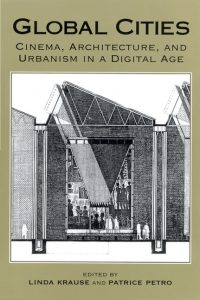
The reading spends time talking about an exorbitant city and generic city. It tries to give a definition and details established from different essays.
The reading suggests that city is invisible when it is exorbitant. The word ‘invisible’ conveys that a whole city cannot be represented visually – “image of the city”. As the book tells us, the relationship with us and image completely changes when talking about an exorbitant city; the city teaches more about the image than the image does about that city. It also mentions that since the historical, cultural changes and events in the city are too much for a single person to accept, we tend to produce a moving image to respond to this overloaded information.
On the other hand, generic city is more ‘visible’ compared to an exorbitant city. Since the city was too concerned to be forgettable, they start to put images after images to be more interesting. For some point, the city is recognizable. However, if designing the image has gone too far, the city reaches a point where any new anomalous detail fades out because there are too many anomalies, a new anomaly becomes ‘boring’.
Taeyeon Lee (3035718096)
An excellent reading of Abbas and at differentiating Abbas’ critique of the generic and exorbitant city. Given your own understanding of these two terms, could you offer some real-life examples of such cities? And why do you think they fall in either category?